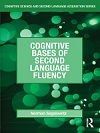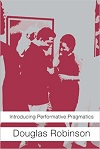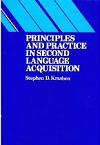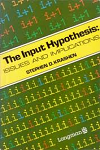Imura Lab
大阪工業大学 知的財産学部 英語教育研究室
研究図書
Extensive Reading Activities for Teaching
Language
Julian Bamford, Richard R. Day (eds.)
(2004)

This book provides over one hundread hands-on activities based on extensive reading. The activities extend across a wide range of purposes and target skills: (1) Organizing Extensive Reading, (2) Oral Fluency, (3) Writing, (4)Reading, and (5) Vocabulary.
Cognitive Bases of Second Language Fluency
Norman Segalowitz 著 (2010)

© Routledge
Definition
Fluency ← "fluidity"
Filmore (1979) On Fluency
(1) The ability to talk at length with a minimum of pauses.
(2) The ability to package the message easily into "semantically
dense" sentences without resources to lots of filler material.
(3) The ability to speak appropriately in different kinds of social
contexts and situations, meeting the special communicative demantds
each may have.
(4) The ability to use the language creatively and imaginatively by
expressing ideas in new ways, to use humor, to make puns, to use
metaphors, and so on.
Three Aspects of Fluency
(1) Cognitive Fluency: ability of the L2 speaker to smoothly express
thoughts in L2 speech
(2) Utterance Fluency: objective features of an uttarance
(3) Perceived Fluency: subjective features of what listeners
perceive
Objective Measures of Fluency
(1) Speech rate: number of syllables divided per total time
(2) Articulation rate: number of syllables divided by phonation time
(3) Phonation time ratio: phonation time divided by total time
(4) Mean length of runs: number of syllables divided by number
of silent pauses
(5) Number of silent pauses per minute: number of silent pauses
divided by total time
(6) Meanpause duration: total length of silent pauses divided by
total number of silent pauses
(7) Number of filled pauses per minute: number of filled pauses
divided by total time
(8) Number of repairs per minute: number of repetitions, restarts
and repairs divided by total time
(9) Means of syllable duration: phonation time divided by number of
syllables
(10) Average syllable duration: phonation time divided by number of
syllables
(2018.2.15)
Introducint Performative Pragmatics
Douglas Robinson 著 (2006)

© Routledge
Metaphor of language
While constative linguistics sees language as machine, performative
linguistics sees language as drama.
Focus
| Constative Linguistics | Performative Linguistics |
| forms / structure / function | message |
| langue | parole |
| competence | performance |
| words referring to something | people doing something with words |
| objectivity | subjectivity |
| truth false condition | interpretation |
| analysis | integration |
(2017/12/30)
Principles and Practice in Second Language Acquisition Stephen D. Krashen 著 (1982/1987)

© Prentice-Hall
"The solution to our problems in language
teaching lies not in expensive equipment, exotic methods,
sophisticated linguistic analysis, or new laboratories, but in full
utilization of what we already have, speakers of the languages using
them for real communication... language acquisition occurs when
language is used for what it was designed for, communication." (p.1)
"Language acquisition is a subconscious process; language acquirers
are not usually aware of the fact that they are acquiring language,
but are only aware of the fact that they are using the language for
communication." (p.10)
(2014/04/30)
The Input Hypothesis Stephen D. Krashen 著 (1982)

© Longman
"The Input Hypothesis claims that humans acquire
language in only one way―by understanding messages, or by receiving
'comprehensible input'." (p. 2)
"Language teacher is first of al someone who can present messages of
interest, help make them comprehensible, and put students at ease;
in short, a communicator. The grammarian function of the langage
teacher is very secondary." (p.58)
Five hypotheses of second language acquisition:
1. The Acquisition-Learning Hypothesis
2. The Natural Order Hypothesis
3. The Monitor Hypothesis
4. The Input Hypothesis
5. The Affective Filter Hypothesis
(keywords) comprehensible input, i + 1, meaning negotiation
(2014/03/18)